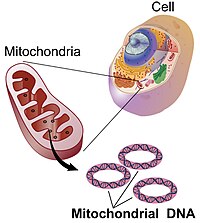
Photo from wikipedia
The diagnosis and treatment of the diseases in a certain coordination is a subject that has been emphasized in recent years. Theragnostics approaches allow simultaneous diagnosis and treatment of chronic… Click to show full abstract
The diagnosis and treatment of the diseases in a certain coordination is a subject that has been emphasized in recent years. Theragnostics approaches allow simultaneous diagnosis and treatment of chronic diseases such as cancer. An ideal theragnostic should be biocompatible and can be used safely in humans. Although several types of theragnostics have been developed, none of yet satisfied these criteria. Bioinspired materials with noble metal centers encapsulating therapeutic and imaging agents were shown to possess theragnostic activities. In this study, it was aimed to synthesize, characterize, and evaluate the cytotoxic and genotoxic effects of self-assembly of diphenylalanine (Phe-Phe) dipeptides presence of mercury (Hg2+) ions to be used for theragnostic. Cytotoxicity and genotoxicity studies were done in mouse fibroblast (NIH/3T3) cells by 3-(4,5-Dimethylthiazol-2-yl)- 2,5-diphenyltetrazolium bromide (MTT) and single cell gel electrophoresis (Comet) assays, respectively. It was found that cell viability decreased in a dose-dependent manner in 24-, 48-, and 72-h treatment. Also, Phe-Phe dipeptides did not cause any significant changes in DNA damage at the concentrations of 1, 2, and 5 mg/mL in 4- and 24-h exposures. In the 48-h exposure, Phe-Phe peptide exposure at concentrations of 2 and 5 mg/mL caused a significant increase in DNA damage and in the 72-h of exposure, a significant increase in DNA damage was observed at all studied concentrations. According to the results of the study, it can be said that Phe-Phe dipeptides presence of Hg2+ ions are biocompatible and can be used safely for theragnostic purposes.
Journal Title: Drug and chemical toxicology
Year Published: 2022
Link to full text (if available)
Share on Social Media: Sign Up to like & get
recommendations!